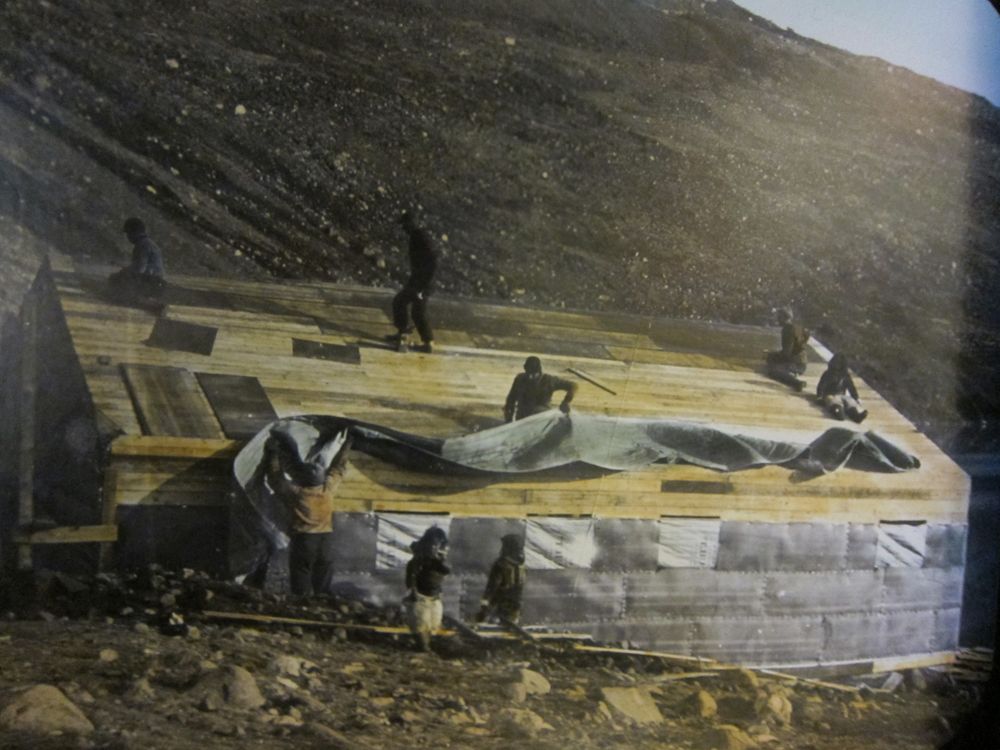'Failed' Arctic Expedition Celebrated on 100th Anniversary

Trekking 1,200 miles (1,930 kilometers) by foot and sled over Arctic ice to survey a distant, unexplored mountain range may feel heroic — until that mountain range turns out to be a mirage.
That was the disappointing realization for a team of seven American men that set off in 1913 on a planned two-year-long journey to Crocker Land — a supposedly glacier-filled, mountainous region off the coast of northwest Greenland. American explorers Robert E. Peary and Frederick Cook both separately noted Crocker Land on past expeditions but did not have time to explore the icy expanse themselves.
But after the researchers discovered that Crocker Land didn't actually exist, crewmembers proceeded to live in and explore the Arctic for a prolonged four years due to several failed attempts to retrieve the men. [See artifacts and specimens from the Crocker Land Expedition]
Marking the 100th anniversary of this largely forgotten journey, the Peary-MacMillan Arctic Museum in Brunswick, Maine, has opened the first exhibit devoted to the Crocker Land Expedition, displaying artifacts from the expedition, such as wooden snowshoes and sun goggles, along with century-old bumblebees and fossils that the men collected for scientific analysis.
Success out of failure
Though the main purpose of the expedition had been a flub, the Crocker Land Expedition crew managed to retrieve thousands of valuable scientific specimens and captured more than 5,000 photographs and some of the first motion pictures from the Arctic that are still used by scientists today.
"If you spend a whole year in the Arctic, you are going to know the place intimately, and so those multiyear expeditions had tremendous value," Susan Kaplan, director of the Peary-MacMillan Arctic Museum, told Live Science during the opening of the exhibit on Nov. 14.
Sign up for the Live Science daily newsletter now
Get the world’s most fascinating discoveries delivered straight to your inbox.
Members of the expedition had extensive background knowledge in ornithology, geology, botany and other natural and physical sciences. When they weren't hunting narwhals and seals to prepare for their long winters, the men spent their free time conducting studies and collecting specimens to bring back to the United States for further analysis.
Since at the time so few scientists had ever traveled to the Arctic, this type of broad sampling was helpful in simply getting a lay of the land, exhibit curator Genevieve LeMoine told Live Science during the reception. [See rare video footage taken by the Arctic explorers]
"It wasn't a matter of going up with specific research questions the way we would do it now," LeMoine said. "It was more casting a broad net."
With their hodgepodge of studies, the crew managed to discover the northern nesting grounds of the red knot, a shorebird that spends summertime in the Arctic and migrates south during the winter. This was a valuable discovery for ornithologists who were studying bird migration patterns at the time.
Crocker Land Expedition researchers also tracked changes in the flowering time and life span of Arctic plants from year to year.
"People are still doing that today, and that data is useful because that’s changing," LeMoine said. "Over one hundred years later, the seasons are moving."
From an anthropological standpoint, crewmembers were ahead of their time in studying cultural ecology, or the relationship humans have with their environment. Their observations were made even before "cultural ecology" had been established as a field of study, LeMoine said.
Remarkably, in the four years the researchers spent stuck in the Arctic, the men never completely ran out of food, though there was some evidence of tension over food toward the end of the journey, LeMoine said. The explorers arrived safely back in the United States in 1917, in time for the eruption of World War I, which would limit the amount of follow-up work they were able to conduct with their specimens.
Such prolonged expeditions are unheard of today in the age of high-resolution satellite photos that would have prevented a mirage from being mistaken for solid land. Nowadays, helicopters can also help retrieve explorers on failed missions, even in remote parts of the world such as the Arctic. Still, modern science may have something to gain from these early long-term studies and the happenstance discoveries that resulted from researchers being somewhere for such an extended period of time, Kaplan said. The biggest obstacle today may be securing funding to support multiyear stays in remote parts of the planet, Kaplan said.
The exhibit, called "A Glimmer on the Polar Sea: The Crocker Land Expedition, 1913-1917," will be on display at the Peary-MacMillan Arctic Museum through fall 2016.
Follow Laura Poppick on Twitter. Follow us @livescience, Facebook & Google+. Original article on Live Science.

Most Popular

